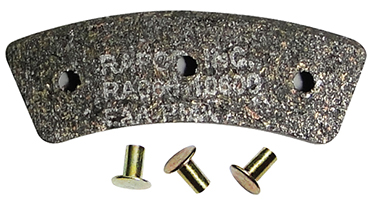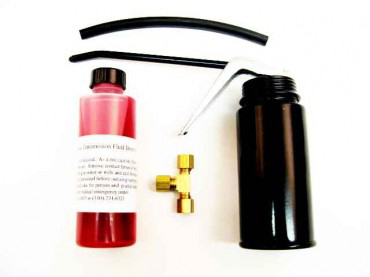Lesson Learned — Check Your Brakes
February 2019 - Aviation teaches us lessons all the time. Sometimes we need to pass on what we learned, for the safety of all.
Landing my RV-9A the other day, everything went fine as I taxied back to my tie-down spot. My habit involves hard braking on one side, to spin the aircraft into a position close in alignment but forward of its spot on the tarmac. In pushing really hard on the right brake pedal, I started to pivot, but then suddenly my foot went right to the floor.
All I knew at the time was that I’d lost brake pressure, but on further inspection it became obvious that I’d dumped a load of brake fluid. It could only come from the brake line, the bleed valve, or the puck. After cleaning up, it became obvious that there had been leakage from the puck and its O-ring. In fact, the puck had almost popped out because the brake linings were quite worn. It turns out that more or less at the time the linings are significantly worn, the travel of the puck allows the O-ring to reach the end of its travel, allowing hydraulic fluid to escape.
Of course, the linings had been inspected at the annual condition report time, but I may have been guilty of not seeing what I needed to see. I made a mistake and wanted to pass on how important it is for others to check the wear guide. In looking for the replacement parts, I noticed that (at least in the photographs) my original Cleveland parts don’t have a clear wear guide, but the Rapco ones do. I have the idea that if your aircraft has stood for a while in a hangar, the brakes might wear down more quickly too while scrubbing off the surface rust.
The big risk would have been if the aircraft had lost directional control on decelerating or taxiing off the runway. That could really ruin your day. There would have been no way to taxi or even slow down without directional control. As it was, I was fortunate to have the problem surface at my parking spot, probably because of the much harder braking pressure to do that pivot maneouvre.
Just to continue the lessons learned idea, make sure you order the right parts. Don’t ask me why I say this, but you could save days of downtime by taking a few seconds to double-check the part numbers.

If you don’t have a brake riveting device yourself, find a chapter member with one. It’ll do a really neat job. Also, since the higher temperature tolerance of MIL-PRF-H-83232D rather than the standard 5606 brake fluid can avoid the brakes bursting into flames, it’s worth the slightly higher cost, and is completely compatible with 5606. I’ve read that the Viton O-rings also have a higher temperature tolerance than the standard nitrile seals. There is an interesting thread on the subject here on the Van’s Air Force discussion forum. You might also like to read this thread on the differences of opinion that the topic creates and form your own conclusions. It’s not unusual for aircraft mechanics to say, “I’ve used 5606 and nitrile seals for 20 years and never had a problem,” but the space shuttle used the higher-spec components. A difference of 200 degrees Fahrenheit flashpoint certainly got my attention. AeroShell 31 and Royco 782 are examples of hydraulic fluids meeting the higher flashpoint MilSpec. You can mix them with 5606, but if you’re like me, you’ll probably want to flush the older fluid completely. Not overheating your brakes has a lot to do with braking technique, but if you’re running out of runway you may not have the option of giving the brakes a rest. You may be familiar with the Dick VanGrunsven’s advice to avoid high-speed taxi testing. Not overheating the brakes is one good reason.
The pump can that I bought, in a Hegar brake bleed kit, worked very well. The only negative comment I have is that the flexible bleeding tube that comes with it is black. How can you check for air bubbles? The quick hardware store fix was just to obtain some transparent tubing.

If it’s been a while since you checked your brake pads, maybe now is the time to do it, while the snow is on the ground. Just one more winter job if you can find a cozy hangar while you’re waiting for Mother Nature to reveal her spring finery.
